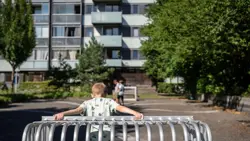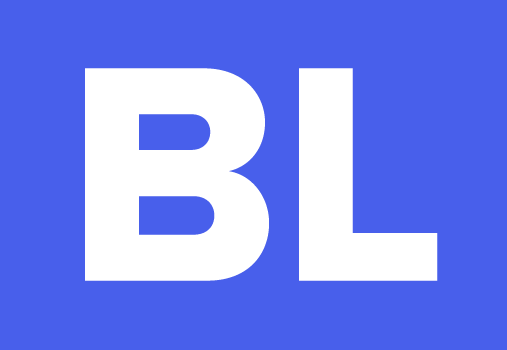
Non-profit Housing in Denmark
We safeguard the interests of the non-profit housing organizations and the one million people who live in non-profit homes in Denmark.
Who is BL?
BL is the danish federation of non-profit housing providers. We seek to influence the development of the non-profit housing sector and its role in the welfare society – economically, technically, and socially. Our political arenas:
Locally in our 11 districts in collaboration with the 98 municipalities in Denmark.
Nationally in collaboration with the politicians of the Parliament.
Internationally through our work in Housing Europe and NBO Housing Nordic.
Non profit housing as a key welfare player
The non-profit housing organizations ensures access to reasonable and healthy housing for people in Denmark who are not able to access the private housing market. As such they are an important piece of the Danish welfare society.
Furthermore, the housing organizations are municipal partners that play an active role in improving local welfare. Whether it is urban strategy and development, social initiatives and impact investment projects, community building, health care, and cultural initiatives, or energy efficiency and other green solutions. The housing organizations are engaged for the benefit of their tenants and the local community.
3 main principles
Non-profit affordable housing in Denmark rests on three main principles:
It is for people not for profit
The purpose of the housing organizations is to provide housing for all in need hereof at a reasonable rent. Non-profit implies that the rent covers operation, maintenance and investment costs; that it is impossible to speculate in the real estate; and that no one makes money from renting out the properties.
It is governed by tenant democracy
Non-profit housing providers are self-governing and self-organized organizations all governed by tenant democracy. The organization board is constituted by tenant representatives, and the tenants make all the important decisions in their housing department i.e. regarding the budget, house rules, refurbishments etc.
It rests on a stable financial model
The stable financial model implies that non-profit housing is financed primarily by regular mortgage loans but with a share of municipal support and state aid through favorable loan options and state guarantee. This enables longer repayment periods. Furthermore, The National Building Fund enables self-financing of necessary refurbishments in the long run. Eventually, this contributes to a diversified housing market with decent housing options for all groups with minimum strain on state budgets.
Visit BL
If you are interested in the Danish model for non-profit affordable housing, you are welcome to visit us.
We are an interest and industry organization, not a housing organization that rents out homes. Therefore, if your inquiry concerns personal housing needs, we are not able to help.
If you are interested in visiting BL with the purpose of research or housing policy knowledge sharing you are welcome to fill out this form.
Living in Non-profit Housing is for everyone
Regardless of your age, whether you are single or married, are studying, busy working 9-5, or you are retired, you are eligible for non-profit housing. Besides providing homes for regular individuals and families the housing organizations also have a special obligation to provide decent homes for groups with special needs. This happens in close collaboration with the municipality and applies, for example, to people with physical disabilities, mental illnesses, refugees and groups with a range of social challenges.
The basics of housing allocation:
The waiting list:
The majority of tenants obtain their non-profit rental home through the waiting list system. Everyone can sign up and there is no income criteria. At Danmarkbolig.dk you can see all 600.000 homes and find out which are vacant.
Socially conditioned housing allocation:
Every fourth vacant apartment is offered to the municipality who can distribute it to vulnerable families or individuals with unmet housing needs.
Housing types
There are three types of non-profit homes:
In Denmark we have 510,000 non-profit family homes for rent. The variety is broad – apartments, terraced houses and detached houses – and everyone can sign up.
If you are young and in education or apprenticeship, you are eligible for non-profit youth housing. The rent is considerably low, which is an advantage when you are studying.
In Denmark, we have more than 44,000 non-profit youth housing located all over the country.
The so called start units are reserved for vulnerable youngsters. Here a social caretaker is ascribed to help with practical things in everyday life and to provide the moral support to help stay in education or keep a job.
If you are challenged by age-related or other disabilities, you may be eligible for an elderly residence.
It is the municipality that assigns the housing based on an assessment of the applicants' abilities and needs. There is no age restriction for the non-profit residences for the elderly, as it depends on the individual assessment.
In Denmark, we have more than 44,000 non-profit housing units specially designed for the needs of the elderly and disabled.
If you want to be considered for a home for the elderly, you should contact your municipality. Read more about housing for the elderly here.
Many organizations also provide housing solutions for seniors who finds quality in moving to a smaller apartment with maybe less chores and obligations and more social life and community.
Historical highlights
To understand how the non-profit housing sector has become what it is today, a short glance at history is helpful.
Discover key moments from BL's history in a concise collection of significant events and milestones.

BL International
Our international engagement happens through the two umbrella organizations Housing Europe and NBO – Housing Nordic.
Housing Europe
The European network of national and regional associations, along with several partner organizations, advocates for the interests of not-for-profit, public, cooperative, and social housing providers in the EU. The political arena is EU politics and legislation.
The network, founded in 1988, represents approximately 25 million homes, which constitutes 11% of the European housing stock.
Bent Madsen, CEO of BL, is president of Housing Europe (2020 – present)
NBO – Housing Nordic
The Nordic association was established to exchange knowledge and coordinate common interests across the Nordic Region. Its primary political context is the Nordic cooperation under the Nordic Council of Ministers and the EU.
The association, founded in 1950, comprises eight housing and interest organizations from the five Nordic countries: Denmark, Finland, Iceland, Norway, and Sweden. Collectively, the members represent approximately 3 million homes.
Bent Madsen, CEO of BL, is chairman of NBO – Housing Nordic (2016 – present)
Social housing and architecture
The Non-profit housing sector in Denmark aim for a high architectural quality. Among our housing departments you will find some of the most valued buildings in Danish architectural history.
In the 3 short films, Ann Sofie Augustesen from BL takes you around the country to visits some of the newer housing complexes, that the designing architects are most proud of. Together they go into details to see and talk about the stroke of genius in the building.

